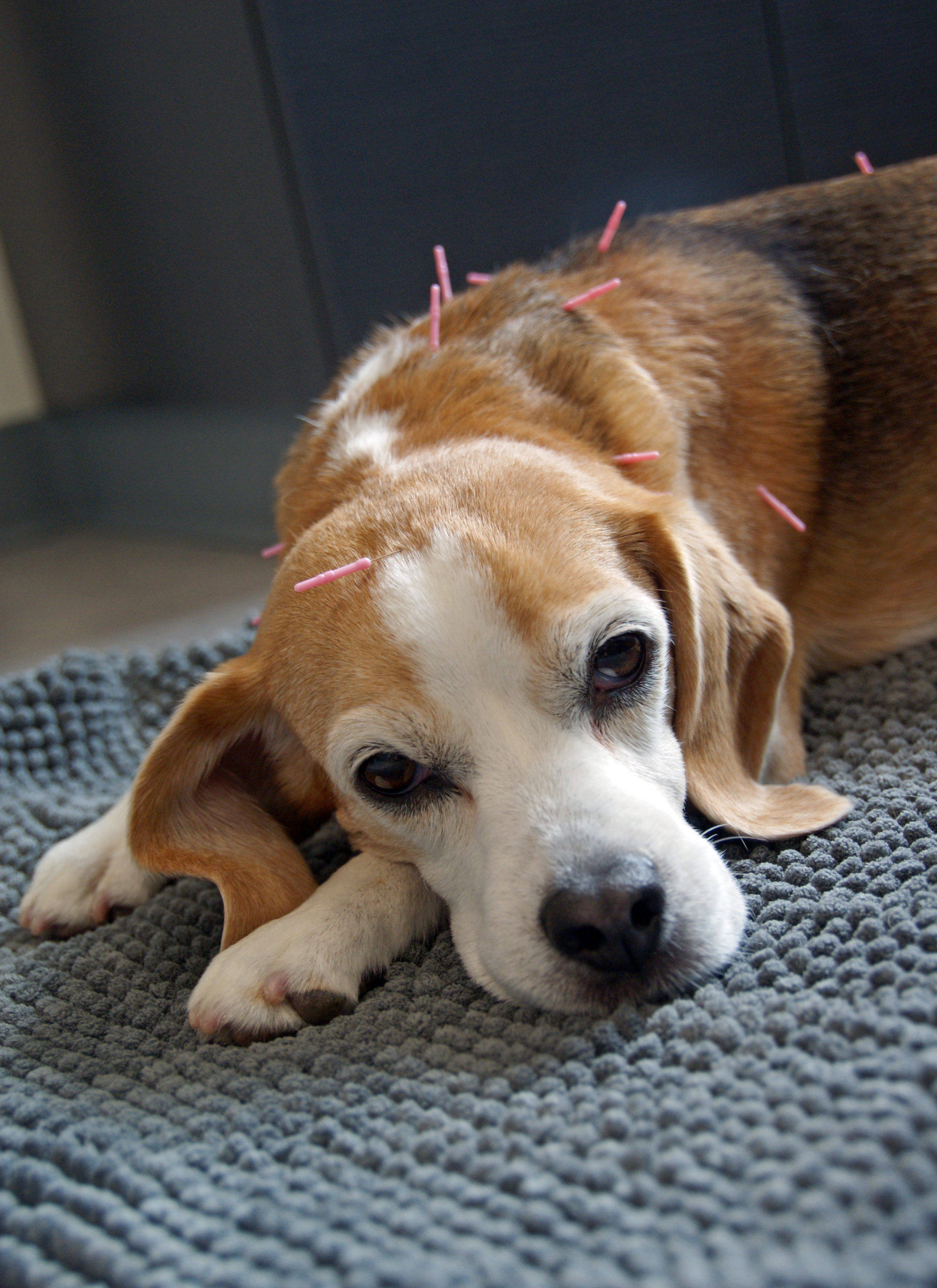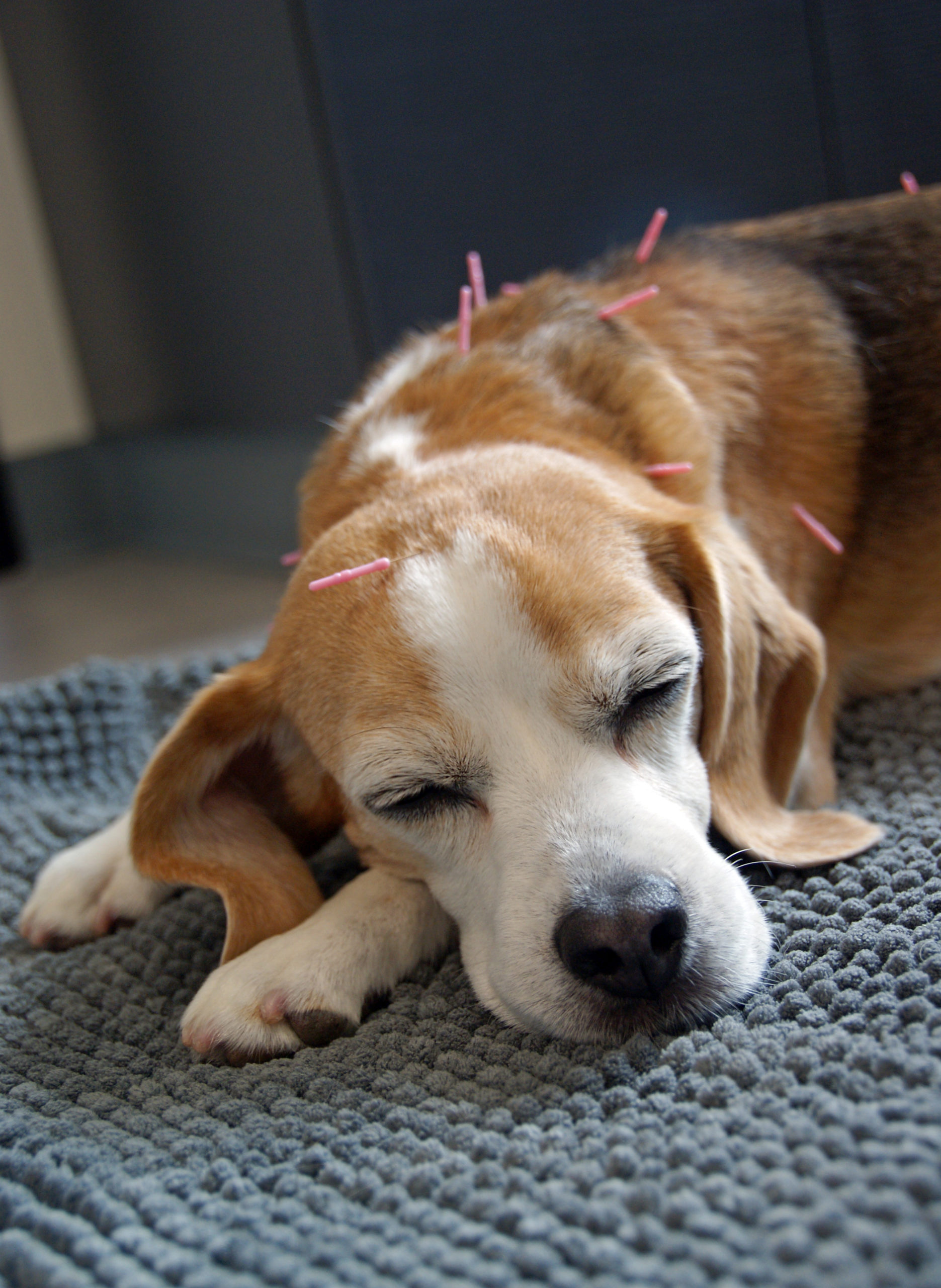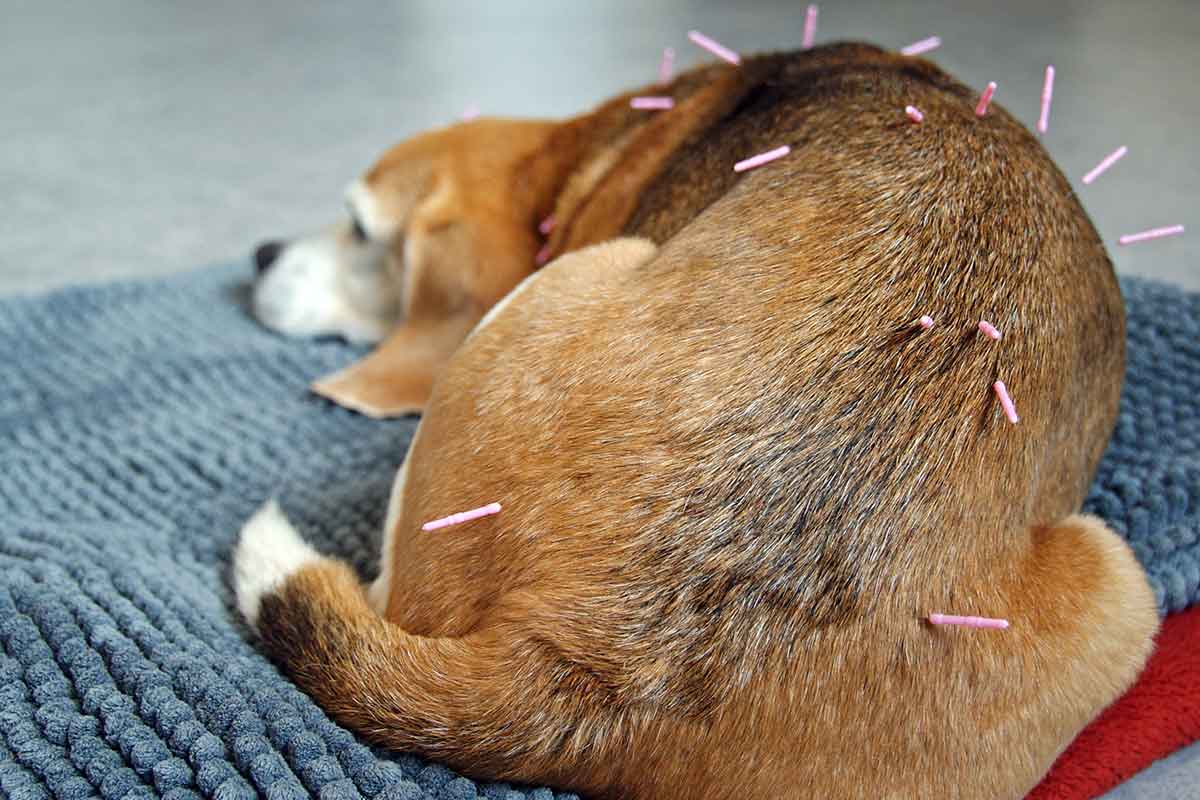“Daeli receives regular acupuncture sessions. She was once very afraid of the needles and she still gets a little worried right before, but she relaxes as you can see here,” says KristyAnn Brock, DVM, CCRP, CVA, Fear Free associate veterinarian at Viking Veterinary Care in Portland, Oregon.
The idea of sticking needles in your dog or cat to help reduce fear, anxiety, and stress (FAS) associated with a veterinary visit may sound contradictory, but Dr. Brock says acupuncture helps with relaxation in a clinical setting. A pet who is relaxed makes it easier for a veterinary team to provide high quality medical care, including a more thorough exam and any diagnostic tests needed.
“Because acupuncture releases feel-good endorphins, many patients displaying fear, anxiety, and stress actually start to relax. Acupuncture helps with future visits since pets may start to associate the veterinary hospital with endorphin release and relaxation that occurs during the acupuncture treatment. These future veterinary visits may then be calmer and more productive as a result,” says Dr. Brock.
In 2015 the American Animal Hospital Association (AAHA) and American Association of Feline Practitioners issued joint guidelines for pain management in dogs and cats, including endorsing the use of acupuncture as a treatment modality for pain in animals. An increasing number of veterinarians offer acupuncture as a treatment modality integrated with traditional Western treatment options for pets.

Conditions Acupuncture Can Manage
Pain, whether acute or chronic, can be all encompassing, making it difficult to focus on anything else. Some pets may be so stressed from pain that their overall quality of life is greatly diminished. Pets in pain may be irritable, lose their appetite, and not want to be touched or picked up. Their interactions with family members and other pets may change. A pet stressed from pain may display a repertoire of FAS behavioral signs including trembling, crouching, and laying their ears back. Often they are resistant to grooming, a veterinary exam, or even petting.
Acupuncture can be effectively used to help manage a variety of ailments, especially conditions that involve pain and inflammation such as osteoarthritis and intervertebral disk disease. Other conditions that may respond favorably to acupuncture include gastrointestinal issues such as diarrhea, constipation, nausea, vomiting, and decreased appetite; respiratory conditions such as feline asthma; metabolic disorders such as chronic kidney disease, liver disease, and diabetes mellitus; and pain associated with trauma from surgery, accidents, or fights. Cancer patients receiving chemotherapy and radiation may experience improved quality of life.
What Acupuncture Is
“Veterinary acupuncture is the insertion of sterile fine metal needles into specific anatomical points on the patient’s body with the intention to produce a healing response, to prevent disease or to treat pain,” says Dr. Brock. “There are 361 acupuncture points located on the dog and cat, many of which are similar to points placed on people. Each acupuncture point is associated with specific areas where a nerve enters a muscle and has specific corresponding actions when stimulated. The desired response to the placement of the needles depends on the stimulation of the specific point itself,” she says.
Explaining how acupuncture works is a bit difficult since it isn’t fully understood and depends on which perspective you take, Eastern or Western. Dr. Brock says, “Eastern medicine focuses on the qi [pronounced “chee”] that moves constantly and unhindered throughout the body. When the body experiences injury or illness, it’s believed that qi is slowed or blocked completely. Acupuncture removes these “road blocks” and restores the flow of energy through the body. Western medicine focuses on the endorphin release in the nervous system from the placement of the needles. Endorphins are feel-good chemicals naturally produced by the body that have been shown to decrease pain and nausea.”

The Acupuncture Session
Because acupuncture needles are so fine, most animals do not experience pain from the stick, and many often fall asleep during the session. The acupuncture session may last between 30 and 60 minutes and typically includes a discussion about the pet’s lifestyle. Generally the needles stay in place from 10 to 40 minutes.
“The amount of time depends on which disease process the veterinarian is addressing as well as the number of needles that are being placed. The longer a disease process has been present, the longer the acupuncturist will attempt to leave the needles in,” says Dr. Brock.
She says the effects of acupuncture are cumulative and some conditions require four to six sessions, while others have an immediate benefit. The number and frequency of treatments depends on the pet, the condition, and the type of treatment used, such as dry needle, aquapuncture, or electroacupuncture. Some chronic conditions may need lifelong treatment.
During the first 24 hours following treatment, pets may appear lethargic, but it’s actually a relaxed state due to physiological changes that include the release of endorphins and other neurotransmitters that have an effect on the brain. After the first 24 to 48 hours, most clients see improved conditions in their pets.
For pets displaying extreme signs of FAS, Dr. Brock recommends at-home sessions. There, pets are more likely to allow needle placement with significantly reduced levels of stress.

Finding A Veterinary Acupuncturist
Veterinary acupuncture is considered a medical procedure and may legally be performed only by a licensed veterinarian certified by an accredited acupuncture program. In the United States, two recommended programs are the Chi Institute (tcvm.com) and the International Veterinary Acupuncture Society (IVAS.org). Each program has a locator on its website to find a practitioner, as does the American Holistic Veterinary Medical Association (ahvma.org).
This article was reviewed/edited by board-certified veterinary behaviorist Dr. Kenneth Martin and/or veterinary technician specialist in behavior Debbie Martin, LVT.








